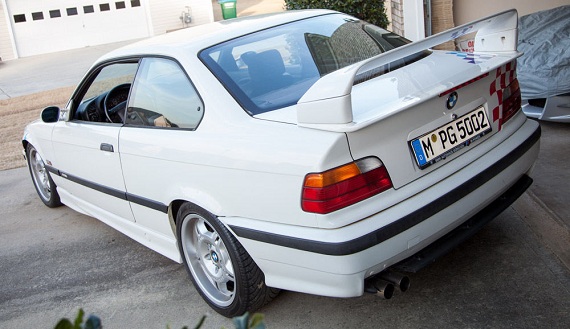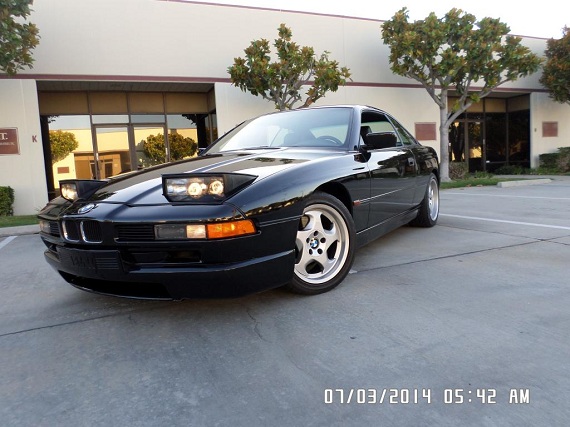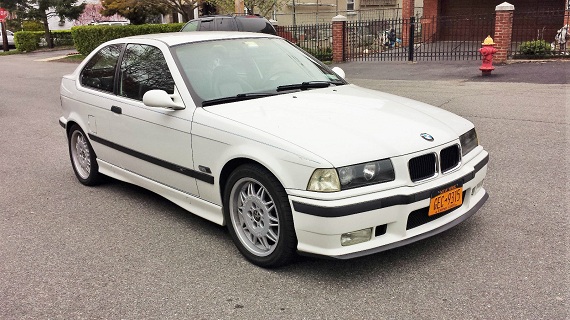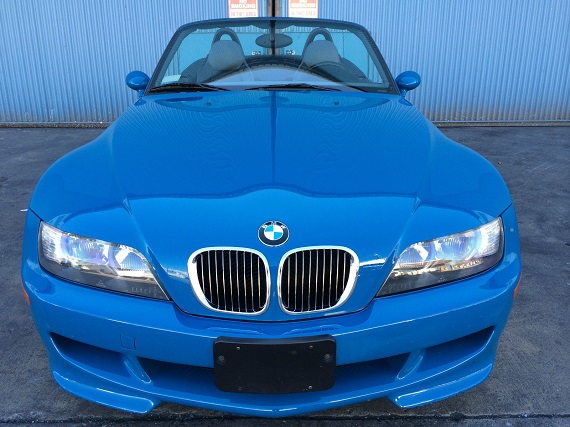I won’t bore you with an attempt to fully recount the storied history of the M1 here. But there are some interesting developments that helped create this halo car, changed its purpose and created the car that you see here. The M1 is a legendary car that, like the 959, 190E 2.3-16V Cosworth, RS200 and some other notable historic cars was born into a world that had already passed it by. It seems that often these ultimate cars have come about when the series rules have changed, and the M1 was part of that. The 959 moved from Group B to Le Mans, running high overall both attempts that it ran. The 190E took to the race track instead of rally, creating a new motorsports legend in the process – who can forget the images of Senna in the 190E? The RS200 moved towards the popular European sport of Rallycross, where it was extremely successful. And the M1? Well, the M1 was a bit lost; BMW had to build 400 of the expensive machines in a bit of a global recession, so they decided to make a one-make race series called the Procar series. Of course, it didn’t hurt that BMW was attempting to get its foot in the door with F1 management as an engine supplier, and the promise of the spectacle of F1 drivers let loose in supercars before the real race sure sounded appealing. What it was, most of the time, was a train wreck of crashes – but it was entertaining for sure, and they ended up building enough M1s to go racing where the car was intended, in Group 5 racing. While BMWs interests and technology passed by the M1 in the early 1980s, there was nevertheless a group of individuals who wanted their M1s turned up in the style of the wild winged, wide fendered and massive wheeled Procars. The result were the 10 AHG Studie cars:
Tag: Motorsport GmbH
There are plenty of people that think that the E36 M3 came to the U.S. in neutered form, but if you drive one you’ll realize that they’re pretty capable cars right out of the box. But BMW knew that the M3 would be hitting the track, and right out of the box they offered a more track-focused version. Stripped down and with extra aerodynamic equipment, the Lightweight was an instant hit with club racers and track addicts, but many enthusiasts still felt that they deserved the full-fat M3. However, if the recent trends with the E30 have taught us anything, it’s that even the less-special versions of the special cars will still command stronger money, and the Lightweight is certainly one of the more special E36 cars. Details like the moveable splitter and stackable rear wing, along with those great Motorsport-colored flags and forged wheels; I’ve loved this car since the first time I saw one pop up at the track in late 95:
CLICK FOR DETAILS: 1995 BMW M3 Lightweight on eBay
1 CommentPeople don’t really give BMW enough credit as a risk-taking company, in my opinion. First came the M1, a mid-engined supercar from a company that was producing primarily economy sport sedans. Audi has been applauded for bringing the brilliant R8 to the market, but BMW did it nearly 30 years prior. Then they introduced that same M88 motor into their mid-range sedan and big coupe, changing the definition of sports sedans and bringing GT cars to a higher level. The M3 helped too, and forced Audi and Mercedes-Benz’s hands to make higher performance small sedans that enthusiasts have enjoyed for a few generations now. More recently, the i8 has gone from concept to reality, and stands as one of the most game-changing designs in history. But one that was often overlooked was the i8’s spiritual predecessor, the E31 8 series. A soft, big and angular departure from BMW’s styling in the 1980s, the E31 received a tremendous amount of development and accolades when it was released, but enthusiasts remained skeptical – partially because it seemed the 8’s performance didn’t live up to the promise of the design cues from the M1. Enthusiasts hoped for a high-performance “M8” that magazines taunted but never came. Instead, we received the heavily M-division-modified 850CSi:
CLICK FOR DETAILS: 1995 BMW 850CSi on eBay
5 CommentsOne of the great unsung heros of the E36 lineup was the compact three-door hatchback, sold in the U.S. as the 318ti. Journalists decried the E30-based rear suspension and oversteering tendency of the 318. Enthusiasts were grumpy that it only came here with the 4-cylinder. And practical folks were happy to pass up the rear-drive amusement for a cheaper and better equipped Golf. But in my mind, the proportions of the 318ti were just right – like a rear drive Corrado, this car screamed of the potential for fun and practicality in one little package. The best looking of the bunch were the M-Sport models – though the changes were only cosmetic, they made the hot hatch look great!
CLICK FOR DETAILS: 1996 BMW 318Ti M-Sport on eBay
2 CommentsThe BMW M Roadster with only 21,000 miles we featured back in May is back up for sale, with the price having been lowered $2,000.




